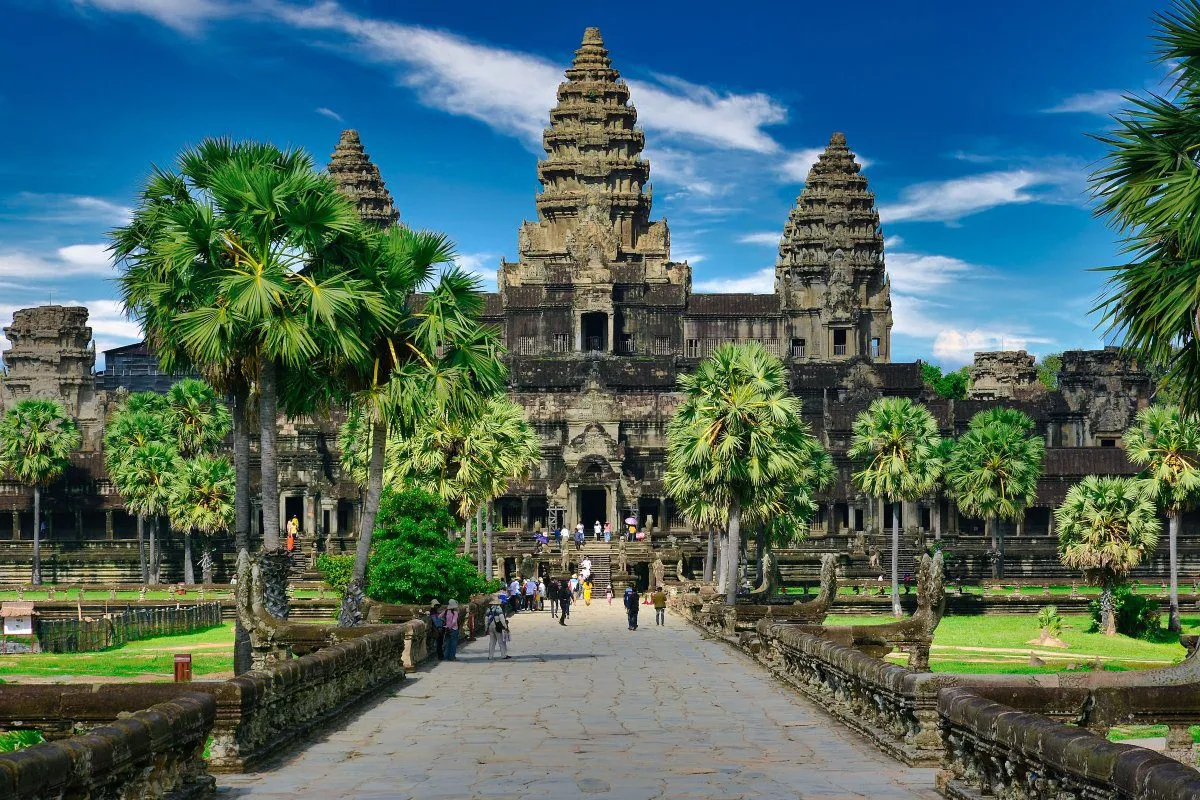
Cambodia’s history is as rich and intricate as its ancient temples, with roots reaching back to the Iron Age. However, it was the rise of the Khmer Empire in the 9th century that truly marked the beginning of Cambodia’s golden era.
The Khmer Empire and the Glory of Angkor
Influenced by India and China, the Khmer Empire became the most powerful force in Southeast Asia. At its heart stood Angkor, a sprawling city of temples and canals. Among them, Angkor Wat—now Cambodia’s crown jewel—is one of the largest and best-preserved religious monuments in the world. For centuries, it symbolized the empire’s sophistication, spiritual devotion, and engineering brilliance.
By the 13th century, Buddhism began replacing Hinduism as the dominant faith, introduced by Sri Lankan monks. Over time, internal decline and external pressure led to the empire’s fall in the 15th century. The Siamese (Thai) in the west and the Vietnamese in the east began vying for control of Cambodian territory, setting the stage for a long period of instability.
The French Protectorate
In 1863, seeking to escape regional dominance, King Norodom turned to France for protection. Though Battambang and Siem Reap were briefly ceded to Thailand, France negotiated their return in 1907. Cambodia remained under French rule until 1953, aside from a brief occupation by Japan during World War II.
This colonial period brought modernization in some sectors but also created new tensions. By the time Cambodia gained full independence, the population had grown from under a million in the 1870s to over 5.5 million by the 1960s.
Independence and Civil Conflict
Cambodia became an independent constitutional monarchy in 1953, led by King Norodom Sihanouk, who later abdicated to pursue a political career, becoming Prime Minister and eventually Head of State. During the Vietnam War, Cambodia maintained a stance of neutrality—but its location made it a strategic target. Viet Cong forces used Cambodian territory as sanctuary, leading to heavy U.S. bombing campaigns and increasing domestic unrest.
In 1970, Sihanouk was ousted in a coup backed by the U.S. This new government quickly became entangled in conflict with the North Vietnamese and Khmer Rouge insurgents. What followed was one of the darkest periods in modern Cambodian history.
The Khmer Rouge and the Tragedy of the Killing Fields
Pol Pot and his ultra-communist Khmer Rouge took power in 1975. In an effort to transform Cambodia into a classless agrarian society, the regime emptied cities, abolished currency, and targeted intellectuals and ethnic minorities. It’s estimated that up to two to three million people perished during this brutal era—nearly a quarter of Cambodia’s population.
In 1979, Vietnamese forces invaded Cambodia, overthrowing the Khmer Rouge. Yet conflict continued through the 1980s, with resistance groups—some backed by international actors—keeping the country unstable. It wasn’t until 1991, with the signing of the Paris Peace Accords, that Cambodia began its path to recovery.
The Return of the Monarchy and Today’s Cambodia
In 1993, Norodom Sihanouk was reinstated as King, ushering in a new era of hope. Though political tensions persisted in the early years, Cambodia has since found relative stability. Today, the country welcomes millions of travelers drawn by its spiritual heritage, tragic yet powerful history, and vibrant culture.
Many visitors choose to combine Cambodia and Vietnam in one trip—cruising down the Mekong River from Phnom Penh to Vietnam, or crossing land borders with ease thanks to improved visa policies.



